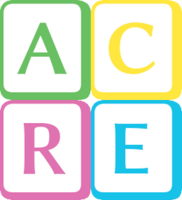
As of April 1, 2022, Ontario communities now have new funding requirements through the HPP program. There's a lot to take in here, so many communities are rightly concerned about what this means for them. In particular, those using HIFIS are wondering how they should start recording data so that they can pull it out at the end of the year.
I'm afraid that I don't have all the answers yet, but since so many people are thinking about this right now, I thought it would be good to start a discussion.
Homelessness & "At Risk"
On page 7 of the Reporting Guide, we learn that "outcomes should be tracked based on housing status at program entry: either at risk of homelessness or experiencing homelessness." This has a few implications.
- We'll need to define program entry as presumably the first date the client receives an HPP-funded service.
- There's a line somewhere that says that clients who previously received services under CHPI or HFG or SCRSP get rolled over, so you may need to backdate the program entry date to be several years ago.
- We need to get really good at tracking housing status on intake. There are a couple places we could pull this data (i.e. Reason for Service), but the best place should be Housing History, since it's used in so many different places.
- Clients could be chronically homeless but still reported in the at-risk of homelessness category, under this program, so your reporting numbers may not match other sources.
Transitioning from Provincial Institutions
On page 30 (and other places), we see that clients who are "following transition from a provincial institution" which is defined as "people or a household with at least one member whose accommodation immediately prior to entering the program was accommodation in corrections facilities, in in-patient healthcare (including mental health and addictions) facilities or provided under the child welfare system."
There's a lot to unpack here. Here are some of my thoughts:
- First of all, you now need to differentiate between provincial, federal, and municipal institutions. This is most relevant for corrections; it's no longer simply sufficient to know they recently left incarceration, you would need to ask whether it was a provincial or federal institution. And the client might possibly not know. So you may need to ask for the name of the institution itself and be able to look that up.
- How are we going to track this in HIFIS?
- A logical place is the Housing History (again, since it's just universally useful), but it only has the "Housing Type" field, which currently has an option that just says "Correctional Facility." You could add a custom value called "Provincial Correctional Facility" but that feels like a workaround. There are also, of course, options for "Foster Care" and "Hospital" in this menu.
- Some communities use Life Events to track these types of events - with the same modifications as above (differentiating in the drop-down menu between provincial and federal). That could also work, but this module is not as generally useful as Housing History, so the benefit isn't quite as high.
- You could use "Reason for Service" when a client is first accessing services. It already has a "Discharge from Correctional / Jail" option and a "Discharge from Treatment" option, but nothing for youth exiting care. So you'd need to customize your Reason for Service drop-down menu much like the above options. There's a major advantage to this: it's fewer steps for staff (if they're booking someone into a shelter, all they have to do is add a book-in). There's also several disadvantages: the Reason for Service field might conflict with Housing History, or Life Events; not every service type has a Reason for Service field (i.e. Case Management). Another problem is what happens when a client has multiple services with different Reasons - say, if your shelter books people out every morning and back in every night (you'd probably pick the earliest one, but not necessarily).
- You could use the "Referred From" field when a client is first accessing services. Make the field mandatory, and make sure all of the relevant institutions are in the drop-down menu. Then, you know where clients are coming to immediately prior to accessing services. Like Reason for Service, it's fewer steps for staff, but all the drawbacks are still present AND the software wouldn't know which institutions are provincial and which are federal (but you could cross-reference to a list, or make a custom report).
- How recently does the discharge need to occur prior to accessing services for the first time? If they were discharged, say, the day before, then that would be obvious. But what if they were discharged, then spent a night wandering around or sleeping outside, and then accessed services a day or two later? What if they stayed in a motel for a week? What's the cut-off? And it's especially tricky when we're talking about clients who are at-risk of homelessness; perhaps they are discharged to precarious housing and spend a month or two trying to make it work before finally entering the system and asking for support. It's less clear when the client is not homeless. This is a big question I have for HPP!
- Another client for HPP: What if a client was discharged 3 years ago, then entered shelter immediately and has been homeless ever since. This year, am I still reporting the client as a "Transition from Provincial Institution" even though it's been a very long time?
Program Categories
HPP funding is subdivided into four streams: Supportive Housing, Community Outreach and Support Services, Housing Assistance, and Emergency Shelter Solutions. When reporting, a really important thing you're going to need to be able to distinguish is what program(s) a client may be in. Several of the categories are mutually exclusive: 2.3.1 "the # of of unique households receiving long-term housing assistance for households not receiving ongoing support services (which would be considered supportive housing)" (p20). This language also appears in many other reporting categories.
Therefore, it's important to be able to have clear definitions in HIFIS which category any given support is being delivered under. This has implications beyond just HIFIS - you need to figure out what your contracts will specify - but assuming you have that sorted out, we need to be able to pull the data out of HIFIS.
There are two main ways that you could do this:
- Set up Programs for each of the program categories: one program called "HPP Supportive Housing" and one called "HPP Housing Assistance" and so on. You'd need to ensure that the Programs field was mandatory and then have reports that pull data for each program area.
- Set up some rules that some program category is being entered in a particular way, and then know what service providers are HPP funded.
The second option is a little unclear, so let me further elaborate. You'd need to set up some rules about how the data needs to be entered, like the following:
- "Supportive housing combines long-term housing assistance (e.g., rent supplements, housing allowances) with individualized, flexible, and ongoing support services." In HIFIS, that sounds like clients that have a Housing Subsidy + a Case Management file must be Supportive Housing clients.
- Emergency Shelter Solutions includes eligible expenses of "Necessary basic needs. E.g., food, clothing, blankets, hygiene items, diapers, and other essentials" and also "Services offered within the emergency shelter or by shelter employees. E.g., housing search assistance; childcare within the shelter; nursing; transportation for shelter residents; outreach to former shelter residents." To me, that sounds like any service delivered by or at an emergency shelter. So, in HIFIS, if the Service Provider Type is Emergency Shelter, it must be "Emergency Shelter Solutions."
- Housing Assistance "covers the use of operating funding to support people in obtaining and retaining housing, including both financial and non-financial housing assistance." To me, that sounds like any activities that are not in an emergency shelter and are not supportive housing, if they directly relate to housing, then they must be Housing Assistance. So that would include: Housing Subsidies without a Case Management file, Case Management with a goal of "Housing Placement" but no Housing Subsidy, Housing Placements with no Housing Subsidy, and Goods & Services related to housing (i.e. Housing Assistance, Housing Placement, Housing Retention Services), and however you record diversion.
- Therefore, Community Outreach and Support Services is anything else. If the client is not in supportive housing and the service provider is not in shelter and the service does not directly relate to housing, then it must be Community Outreach and Support Services.
Another question I have is what happens when a client is adjacent to supportive housing? What if a client is in housing first and receives a Subsidy + Case Management, then one of those supports ends while the other continues? i.e. their Subsidy expires but they maintain Case Management, or vice versa. Does that mean that the client ceases to be in supportive housing and switches to another category of service, or do they remain in the supportive housing category? The example on p14 of reporting guide suggests the client would be in both categories.
What happens if a client is assigned a partial housing resource - i.e. assigned a caseworker to help them find housing - and they are determined to be eligible to receive a subsidy, but it takes the client several months to secure housing and move in, and at that time they begin receiving the subsidy and they keep the caseworker? Would this be considered receiving more than one category of supports?
Also, at least one community has asked me about if the subsidy and case management portions were funded via different sources i.e. subsidy through HPP and case management through LHIN funding or Reaching Home. Do these clients count as supportive housing clients even though HPP is only funding a portion of the supports?
These last three questions are questions I have for HPP, and I don't know the answers yet. I'll keep you posted when I know.
Some Good News
Believe it or not, there is a silver lining out there for you. Well there are a few, actually, besides greater flexibility about how you can spend the money.
The first is emergency shelter use. The old CHPI program was notorious for requiring communities to report on non-unique household stays, so, only counting heads of households and not dependents, but then counting them multiple times if they had multiple stays? It was the weirdest reporting indicator and I have no idea what they did with that number. Now, finally, communities are required to report on unique households, bed night capacity, bed nights used, and number of shelters. Those are all COMPLETELY REASONABLE! Huzzah! (Don't read too closely the entry about bed-nights though.)
And the second is By-Name Lists. The good news is that most communities are already familiar with and comfortable with reporting this data. And the requirements are consistent with the federal Community Homelessness Report, so you should be able to fill out two reports with one stone. Er. Report. Hit two birds with one report. Yes, that makes sense.
Okay. That's it for now. As you can see, I've done some thinking about what you need to consider for your HPP program in HIFIS, but there's still a lot of work to be done before I can be confident about saying "here's what you should do." Stay tuned!

Comments